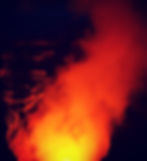Masaya Volcano: Nicaragua’s Prize Attraction
- Casa Marimba
- Jan 14, 2022
- 4 min read
Updated: Nov 8, 2022
Masaya Volcano Nicaragua is a once-in-a-lifetime experience that no trip to Nicaragua would be complete without. Dubbed by Spanish colonizers as the ‘Mouth of Hell’, this still-active volcano offers a rare chance to peer over the edge of its sweltering crater and observe the bubbling lava lake it holds.

Masaya Volcano Nicaragua National Park
This national park that protects this volcano, or rather protects the outside world from it, is both the first and the largest national park in Nicaragua. It contains two volcanoes, five craters, and spans 54 km².
This national park that protects this volcano, or rather protects the outside world from it, is both the first and the largest national park in Nicaragua. It contains two volcanoes, five craters, and spans 54 km².
The Mouth Of Hell
The park’s most famous attraction is the crater known as Santiago, part of the Masaya volcano that last erupted in 2008. This crater and lava lake sits at the center of the park at an altitude of 635ms above sea level and is open for tourists to observe from its shore. It is known for its continuous emissions of sulfur and the incandescent lava that lies within and is sometimes visible from the viewpoint. Once you have seen, smelled, and heard this volcano’s echoing roar, you will quickly understand how it earned its nickname ‘Mouth of Hell’.
Most recently in 2020, US daredevil and highwire artist Nik Wallenda made headlines for a death-defying stunt: successfully crossing the 5.6km-long crater by balancing on a metal cable.
Lava Tubes
Aside from the Santiago crater, the volcanoes have created an impressive network of lava tubes. These caves, created by ancient lava and gas flows, are now home to thousands of bats and other unusual insects and can usually be explored on foot (depending on the volcanic activity at the time). The most well-known of which is Tzinaconostoc Cave, which begins from inside the Santiago crater.
These caves also bear historic significance due to the range of Pre-Hispanic artifacts that
have been discovered within. These were presumably used by Nicaraguan natives during their rituals.
Those looking to learn more about the science behind the volcanos and the park’s ecosystems can do so in the park's riveting Visitor Centre.
Hiking In The Park
There are numerous trails to hike around Masaya Volcano, Nicaragua. These connect the caves and craters, which span distances between 1.4 and 5.9km, the most popular of which are just a short walk from the Santiago crater. On some of these hikes, if you are lucky you may be able to observe some of the park's range of wildlife including iguanas, monkeys, skunks, raccoons, opossums, deer, and even coyotes. However, keep in mind that, depending on the volcanic activity in the area, some or all of these hikes may not be accessible for visitors at the time of your visit.
Types of Tours
There are various tours available with options to go in the daytime, night tours which are best for viewing the lava lake in the Santiago crater, and tours combined tour other local attractions.
Upon entering the park you will buy tickets at the gate where they will be happy to explain what the park has to offer. Continuing along the path you will have a chance to visit the Visitors Center and learn more about the park and volcanoes. Next to the center, there is a picnic area where you can relax and enjoy some refreshments. It should be noted that for those opting for the night tour the option to buy refreshments and enter the Visitors Centre will not be available.

The final stop is the Plaza de Oviedo which is the best spot in the park for observing the Santiag0 crater. In front of the plaza, you will also notice the hill with the cross at the top, first placed there by the Spanish colonizers to ward off the evil they believed to be dwelling in the depths of the crater.
For more information on the available tours get in touch with Casa Marimba.
Opening Times
The park is open to the public every day from 9am to 4.45pm, but can also be accessed after 5pm for those opting for the aforementioned supervised night tour.
How To Get There
The park is just a 10-minute drive from Masaya, which is just a short bus or taxi ride from our hotel in Laguna de Apoyo Nicaragua. The Santiago crater is near the entrance of the park, 5km up a steep incline which requires a good level of fitness. But you can also drive up or take a taxi to drive up to the crater.
Granada Travel
Granada is under 1hr from Masaya and you can take a bus from the terminal in the center or take a taxi.
Managua Travel
The park lies less than half an hour away from Managua and you can take a bus from the UCA terminal in Managua city center to Masaya or take a taxi.
The Masaya Volcano is by no means the only volcano open to visitors, so if this sounds interesting please check out our other blog on Mombacho Volcano that is located just across the Apoyo Lagoon.




